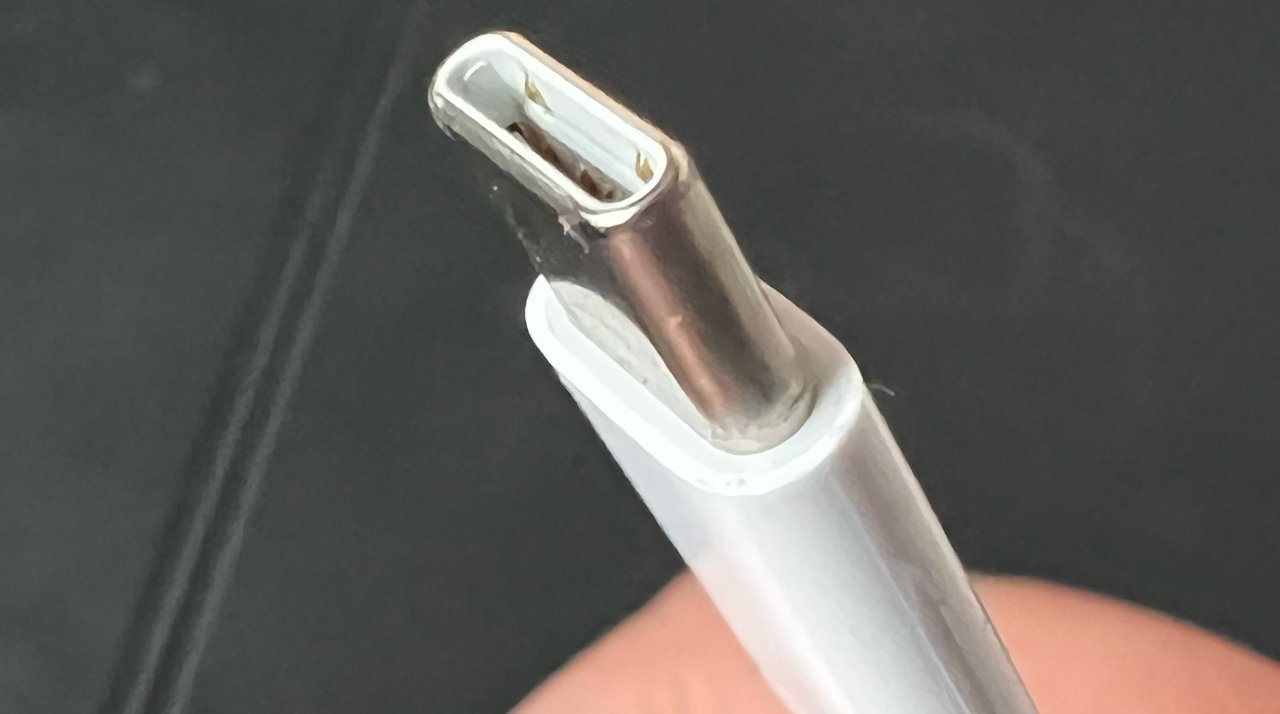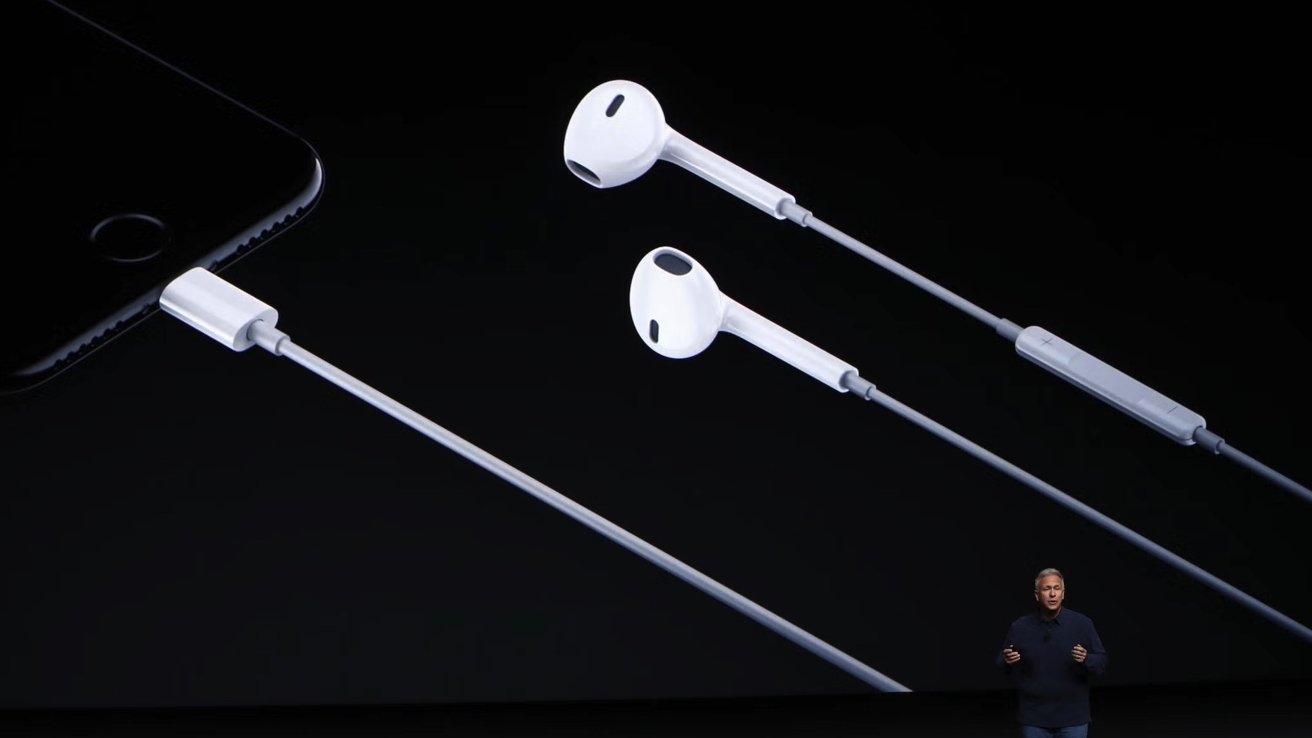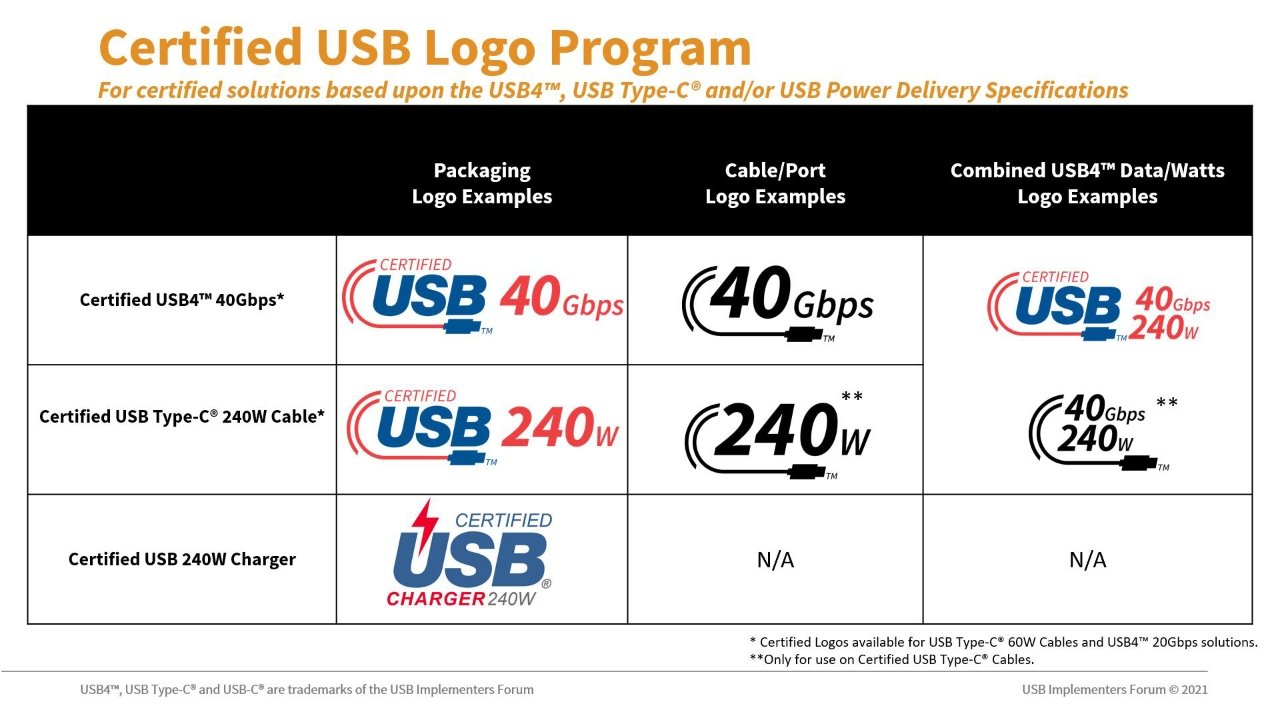iPhone 15 USB-C will fix some problems, but create issues for most
Apple's iPhone 15 transition to USB-C is good in the long run, but is bound to create consumer confusion in the larger population, thanks mostly to the continued evolution of USB-C connectivity itself.

A USB-C cable.
The problem here isn't the early adopters, like most of the people reading this editorial. We've already bought USB-C cables, or acquired them with other devices. Or, we don't use cables anymore at all, preferring to use MagSafe to wirelessly charge our devices.
But the iPhone 15 USB-C shift is likely to create havoc, at least in the short term, for millions of other customers who will find the new connector to be another complication when it comes time to upgrade or replace their iPhone.
For the past decade, those folks have been buying Lightning-equipped cables and accessories. They've invested, for lack of a better term, in the connectivity, and they're only reluctantly going to be getting on board with a new connector that makes their existing gear obsolete. Those with really long memories will remember the noisy transition from the 30-pin Dock Connector when there were far fewer iPhone users.
A new connector every decade
Although USB-C hasn't come to the iPhone until this year, Apple is actually a pretty early adopter of the standard. Apple introduced USB-C on the Mac eight years ago with the 2015 MacBook, only a year after the standard itself was finalized.
Apple would eventually add USB-C connectors to the MacBook Pro, the iPad, and iPad Pro. But Apple has stubbornly stuck to Lightning for the iPhone until this year.
Apple's slow to change peripheral connectors, though it manages to do so about once a decade. The 30-pin Dock Connector appeared with the third-generation iPod in 2003, and lasted until 2012, when Apple debuted the iPhone 5.
At the time, Apple's VP of Worldwide Marketing Phil Schiller promised that Lightning would be iPhone the connector to last another decade. He was right -- Lightning made it 11 years before being replaced by USB-C.

Little Phil Schiller, big iPhone and Lightning EarBuds
When it comes to the iPhone, Apple seemingly had its hand forced by the European Union. The EU mandated USB-C last year, as a standard for most small electronics, including cell phones. While that rule doesn't go into effect until 2024, the iPhone's product cycle starts in September, so now's the time for Apple to make the change.
EU lawmakers saw USB-C is an opportunity to reduce waste and save consumers money. A report commissioned by the EU in 2021 claimed that such standardization will reduce the amount of annual e-waste European consumers produce by 11,000 tons and save them more than a quarter billion dollars.
So ultimately, the iPhone's transition to USB-C is about consumer convenience and economy. You can use the same cable to charge your Mac and your iPhone, and the same cable can charge, transfer data, and display video.
That, in theory, means fewer cables to bring with you when you travel, and fewer power adapters clutter your home, office, and backpack. Or at least, that's how it should work.
USB-C is good in theory, but less so in actual implementation. It's not at all obvious at a glance if the USB-C cable you're buying supports the highest-speed data transfer it can, or can support fast charging.
This isn't the connector's fault. In fact, the USB-C connector is pretty good, and a heck of a lot better than what preceded it. If we never see another micro USB cable, it'll be too soon.
USB-C is reversible, like Lightning, and it's pretty durable too. Cables with USB-C plugs are already in plentiful supply, you can get them almost anywhere, and adoption by device makers has been swift.
But "USB-C" as a term only tells part of the story.
Common connector, different cables
It's not obvious looking at them to know which cable has what functionality because "USB-C" simply tells you what kind of physical connector is being used. The same connector can be used for many different cables, capable of achieving different data rates and sporting different features.
A cable with a USB-C connector may support data transfer speeds of anywhere from 480 megabits per second (Mbps) to 80 gigabits per second (Gbps), depending on whether the cable is active or passive, and whether a USB 3.2 or 4 host controller is being used. Adding to the confusion is the fact that the USB-C connector is used for Thunderbolt 3 and Thunderbolt 4 -- though Thunderbolt cables are branded with a stylized lightning bolt that should make them pretty easy to recognize.
We're going to skip the full active versus passive discussion here as it's not super-relevant, but we've talked about it before.
Another potential point of confusion comes from the rumor that Apple will differentiate data transfer speeds on different iPhone 15 models. Pro models reportedly are getting higher-speed transfer of up to 20 Gbps, more than the USB 2.0 limit of 480 Mbps that Lightning allows, and more than the base model iPhone 15 and 15 Plus will purportedly support.
Trust no one
The USB Implementers Forum (USB-IF) deserves some blame for this. USB-IF members, including Apple and Intel, created a positively Byzantine set of "certified logo" programs to describe various USB capabilities, programs which are paper tigers that are for the most part completely unenforced. Cable makers can ignore the guidelines with impunity, and many do.

New USB-C logos
If money isn't an object, you can buy a USB-C cable tester, a specialized multimeter that will give you detailed specifications about the cable's capabilities. Assuming the cable uses an embedded E-Mark protocol controller, that is, which many do, but some don't.
We've even seen cables on Amazon and elsewhere with tiny LED displays that tell you what power level the cable is charging at and whether USB Power Delivery (USB-PD) is supported. But these are expensive options, and really overkill for the vast majority of consumers.
So what's the advice for people who are just wading into USB-C territory now? Don't assume every USB-C cable you get is the same.
Don't just pile USB-C cables into the same box or desk drawer as the rest of them. Track the cable that came with your device using labels, even improvise with a piece of masking tape if necessary.
And hope, against almost a decade of continued development and evolution, that Apple will wrangle some kind of sense out of this USB-C madness. But given how confusing their own cable nomenclature has become, we wouldn't bank on it.
Read on AppleInsider



Comments
Oh, and I wonder if someone will write an app to run on your mac connected to a iPhone with a USB-C cable that will identify the cable's capability. Possible?
The one obvious exception is so expensive that nobody is likely to try and use it as a phone charger. Thunderbolt supports optical cables with optical-to-electrical transceivers in in the connector ends. You do see them as extra-long Thunderbolt cables, and that's obviously not going to carry power unless somebody's run a couple of copper wires alongside the optical fibers. I don't know if hybrid cables like that exist, but I do know that at least some optical Thunderbolt cables are pure optical and won't carry power by definition. The good news is that an optical Thunderbolt cable is at least $200, and most are more like $300-$500 so it's not the kind of thing that's going to be lying around in a drawer waiting to bite unwary people looking to charge their phone - it probably runs from your Mac Studio to a big noisy RAID in a closet...
For truly fast charging, wired is the only way to go. Wireless is great for convenience and people who don't have good dexterity.
Now that USB-C is virtually here, reverse wired charging would be a nice addition.
I think it's awesome that tech even exist, and the price isn't bad at all.
My particular options mean that up to three iPhones could be charging simultaneously while the car is operating. If you have more people in the car that need to charge their phones, maybe you need an SUV with more USB ports, or maybe those people need to buy battery packs.
https://www.amazon.com/gp/product/B08NN8Y1LQ/
Whatever reasons Apple had for avoiding USB-C on their best selling products, unless you work for able and are contractually obligated to toe the company line, you can't pretend that the reason for it was the consumer. If anything the opposite is true: there will be another option out there for high quality USB-C cables if you need them to transfer data from your Android phone to your Windows computer (for example), and Mac and iPad Pro users will be able to use their Apple-provided cables for those products on iPhones etc. too.
I hope Apple’s fit perfectly.
Look at Apple the Apple II was a very hugely popular computer used by schools, businesses, and at home, could run multiple OSes, but Apple came out with the Mac. The Mac was a new CPU, a new operating system MacOS, closed system, crazy expensive, and little software. Apple shoved SCSI in to the world with the Mac, a headed design with a tiny screen. Apple didn't stop changing changing chips again, dropping SCSI, at one point multiple internal busses in difference models, Apple Unix, Apple the software company Apple not a software company and owning an Mac was risky. Apple will say it was all innovation, but a lot was just to make do things there way.
This is just a port change and not the first on the iPhone, quit making such a big deal out of it. Life as you know it isn't coming to an end, at some point you'll switch and you'll have to adjust and then just moving on. But don't worry like the headphone jack disappearing Apples going to make that charging port disappear in the near future too. Now that will be a big change, but they will do it and people will live.